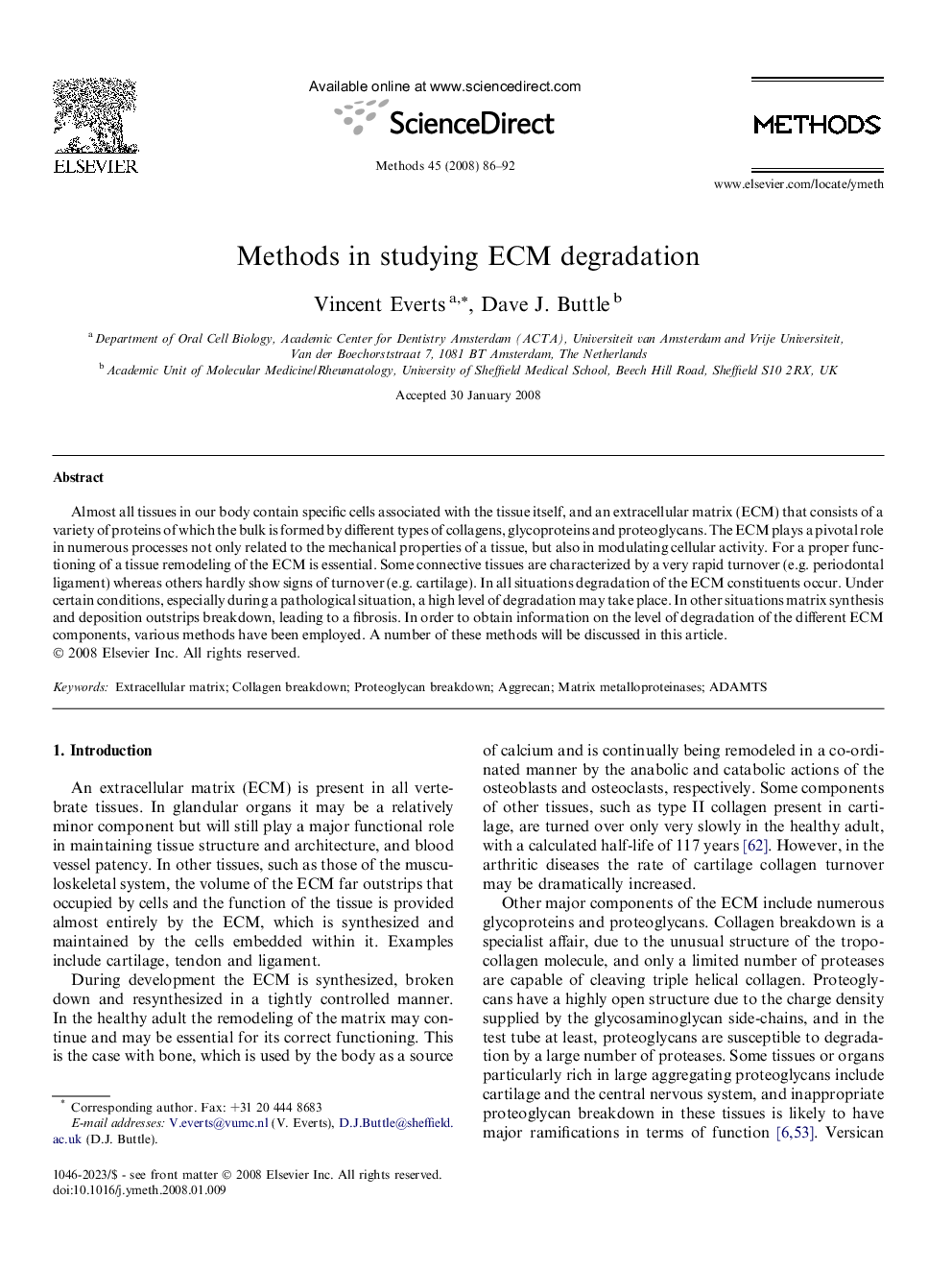| Article ID | Journal | Published Year | Pages | File Type |
|---|---|---|---|---|
| 1993804 | Methods | 2008 | 7 Pages |
Almost all tissues in our body contain specific cells associated with the tissue itself, and an extracellular matrix (ECM) that consists of a variety of proteins of which the bulk is formed by different types of collagens, glycoproteins and proteoglycans. The ECM plays a pivotal role in numerous processes not only related to the mechanical properties of a tissue, but also in modulating cellular activity. For a proper functioning of a tissue remodeling of the ECM is essential. Some connective tissues are characterized by a very rapid turnover (e.g. periodontal ligament) whereas others hardly show signs of turnover (e.g. cartilage). In all situations degradation of the ECM constituents occur. Under certain conditions, especially during a pathological situation, a high level of degradation may take place. In other situations matrix synthesis and deposition outstrips breakdown, leading to a fibrosis. In order to obtain information on the level of degradation of the different ECM components, various methods have been employed. A number of these methods will be discussed in this article.
